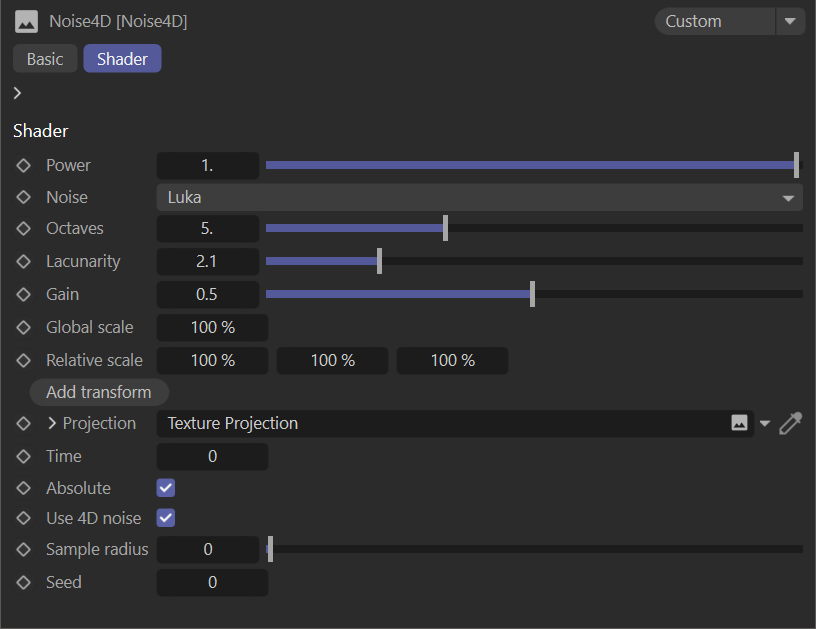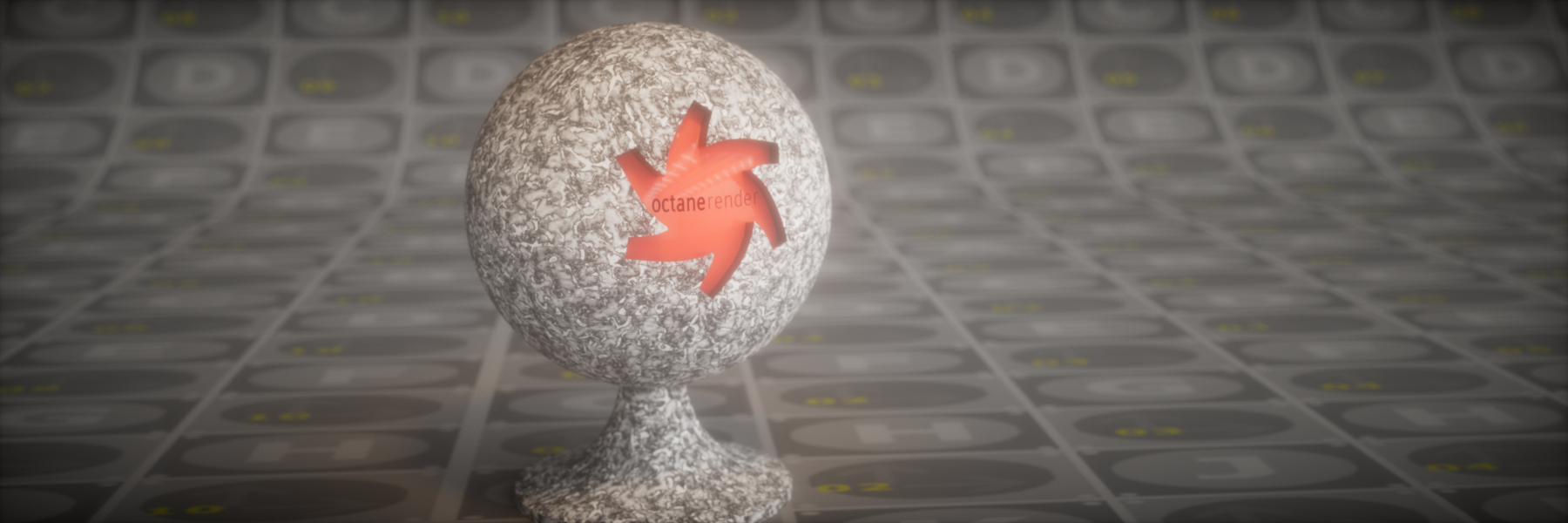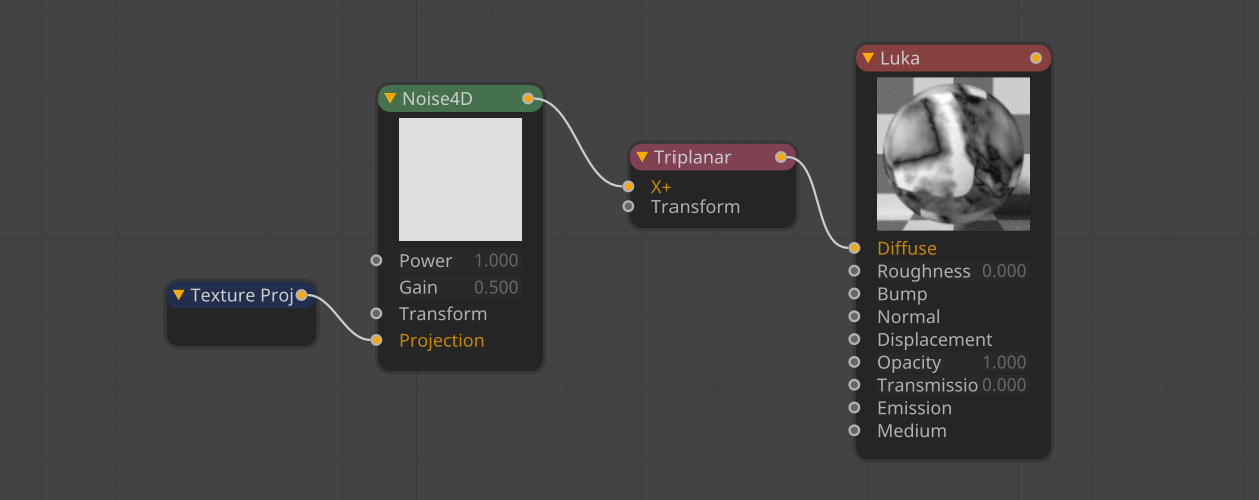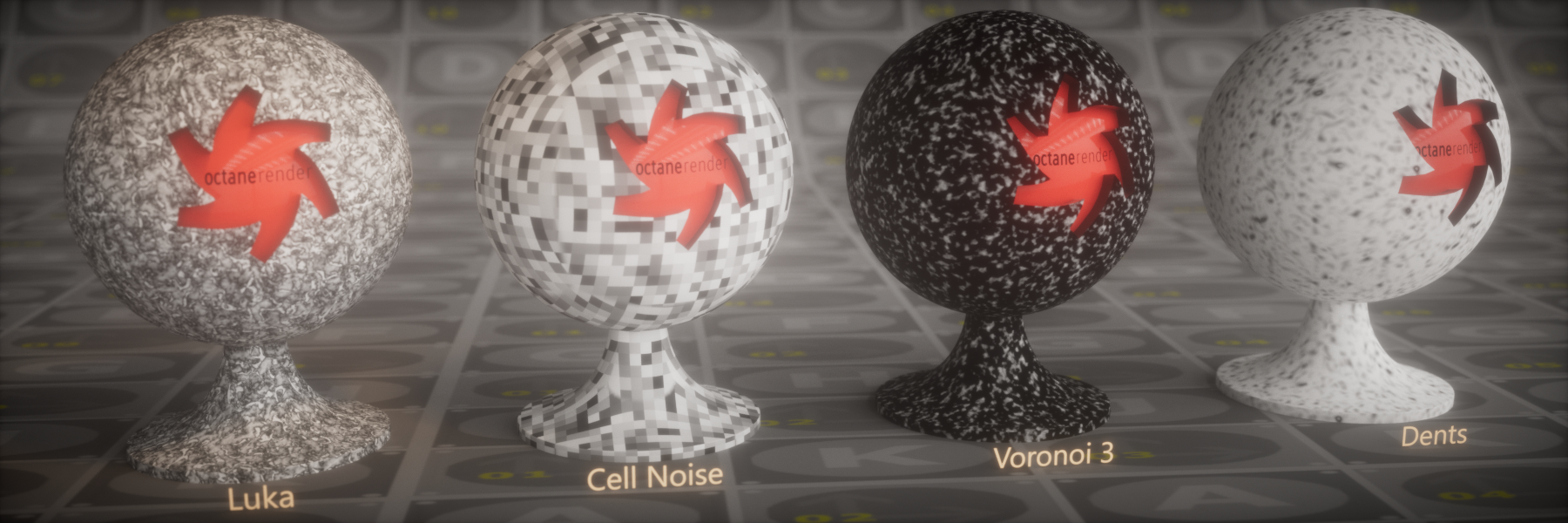Noise 4D
The Noise 4D node mimics the Cinema 4D Noise shaders, using OSL versions of these noises. Use Noise 4D instead of the actual Cinema 4D noise shaders, which are not supported in Octane. For speed and reliability, the Octane Noise node, discussed here, is the better first choice, though with less noise options available.
|
|
NOISE 4D
|
How to Use
Open the Node editor and prepare the setup as you see in the image below. Any "Texture", "Power" or "Amount" channels you can use the Noise texture in those channels (as the Float texture).
|
|
NOISE 4D NODE SETUP
|
Noise Texture Settings
Noise
There are 31 different noise types. See the menu.
In the image below you can see four of the available 31 noises in the Noise 4D Texture.
|
|
SOME NOISE 4D EXAMPLES
|
Power
A multiplier which controls the overall brightness of the texture.
Octaves
Sets the scale of the detail in the noise.
Lacunarity
Determines the amount of additional detail for every octave.
Gain
This value will make the noise brighter or darker.
Global Scale
Sets the overall size of the noise, expressed as a single percentage (meaning the value is uniform for all axes).
Relative Scale
Expressed as three percentage values, one for each axis, allowing for independent scaling of the noise.
Add Transform
Sets the position, scale, and rotation of the texture on the surface, as explained here.
Add Projection
Sets the way the texture is projected onto the surface, as explained in this section.
Time
This value sets the state of the noise by time. To animate the effect, you will need to set beginning and ending time values by keyframe.
Absolute
Sets the absolute value of the noise.
Use 4D Noise
Switches between 2D and 4D noise.
Sample Radius
The radius to use for the noise.
Seed
The seed value for a unique noise pattern.




